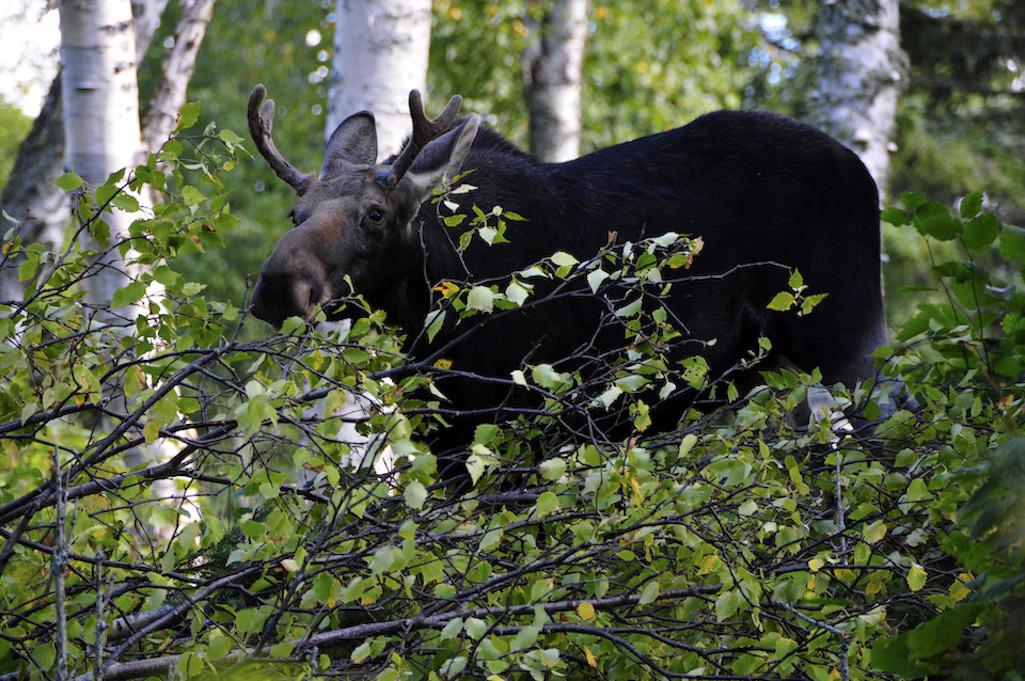
A draft EIS is being prepared for a Wilderness Stewardship Plan at Isle Royale National Park/NPS file
Staff at Isle Royale National Park in Michigan are crafting a Wilderness Stewardship Plan to outline strategies for preserving the park's wilderness character, including the treatment of cultural resources in wilderness. The park's previous Backcountry Wilderness Plan and Final EIS did not provide a decision for treatments and use of historic structures in potential and designated wilderness, and that's one reason for developing a new plan.
According to park staff, preliminary inventory and monitoring of wilderness and backcountry resources at Isle Royale indicate a difference between existing conditions and desired conditions. Changes in backcountry use, management actions, increasing visitation, and associated human-caused adverse impacts suggest an underlying need to more proactively manage human activities that directly or indirectly affect wilderness conditions, the staff said.
To move forward with this planning, the staff is developing an environmental impact statement for the plan that will describe how wilderness resources would be affected by the no action alternative and two action alternatives that address recreation opportunities and other management in wilderness, including the management of historic properties within wilderness.
There currently is an open comment period on the draft proposal that runs through November 21. You can learn more about the plan and comment on it at this site.
According to a newsletter describing the EIS, the national park in the northern part of Lake Superior encompasses 133,788 acres of land and 438,008 acres of surface water (571,796 total acres). The park is the largest island in Lake Superior, which is itself the largest freshwater lake by surface area in the world. There are more than 400 smaller islands surrounding the main island, which together constitute the full archipelago of Isle Royale. Approximately 98 percent of the land portion of the park was designated by Congress as wilderness in 1976. Later additions of land for wilderness designation brought the total wilderness acreage to 99 percent, encompassing 132,018 acres. Currently, 93 acres of the island have been identified as potential wilderness areas. Only 1,677 acres of the island are considered non-wilderness. Although some historic developments predating establishment of the park are present on the island, the park is predominantly undeveloped with the exception of certain areas of the park that serve park management operations and provide visitor amenities.
One action alternative being studied calls for enhancing Isle Royale's wilderness character "with specific emphasis on improving the wilderness experience while maintaining Isle Royale’s natural and untrammeled wilderness qualities. This alternative would provide for additional access opportunities consistent with the public purposes of wilderness, including additional trails, a new campground, and additional campsites in existing campgrounds. Historic structures in wilderness, and potential wilderness areas, would be identified for the following treatment options: preservation, stabilization, mouldering, or demolition. Under this alternative, Isle Royale would designate 81 acres of current potential wilderness to designated wilderness status, after publishing a Federal Register notice."
A second action alternative also calls for enhancing the park's wilderness character, but "by focusing primarily on improving solitude. Solitude is generally preserved or improved by management actions that reduce visitor encounters, signs of modern civilization inside wilderness, facilities, and management restrictions on visitor behavior. The alternative emphasizes solitude by decreasing day use group size, reducing the number of campsites within campgrounds, eliminating trails, and allowing winter public use, and implementing a camping permit system. This alternative proposes eliminating commercial use within Isle Royale wilderness which would enhance solitude through reducing visitor encounters with large groups. The alternative would also remove shelters and structures in wilderness to improve the primitive and unconfined recreation qualities, natural, and undeveloped qualities of wilderness character." This alternative, like the first, would provide treatment options for historic structures in wilderness and potential wilderness areas that could include preservation, stabilization, mouldering, or demolition.
Additionally, the second alternative calls for preserving all 93 acres identified as potential wilderness as wilderness.
Work on a draft EIS is expected to run through the winter, with public review of the document next spring. A final EIS is expected late in 2023.



Add comment